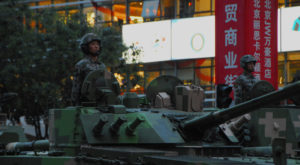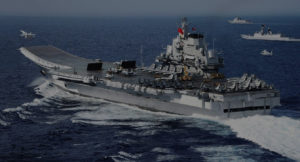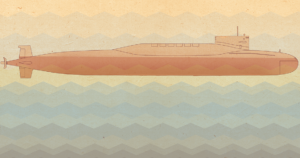Although both China and Taiwan maintain separate militaries and governments, China continues to assert sovereignty claims over Taiwan. Beijing officially seeks peaceful reunification, but has not ruled out the use of force in countering efforts to create an independent Taiwan. In the past, China has demonstrated a willingness to apply military pressure on Taiwan. China’s ongoing military modernization has greatly enhanced the PLA’s capabilities, but it is unclear if China could seize and occupy Taiwan militarily.
What do the experts think?

Cortez A. Cooper III
Senior International Policy Analyst, RAND Corporation

Roger Cliff
Nonresident Senior Fellow, Asia Security Initiative, Atlantic Council

Phillip C. Saunders
Director, Center for the Study of Chinese Military Affairs; Distinguished Research Fellow, Institute for National Strategic Studies, National Defense University
In 1996 China fired missiles, bracketing the island of Taiwan, to coerce its government to abandon what Beijing judged to be a pro-independence. What has changed since then?
Saunders: In 1996 they could scare Taiwan, but they couldn’t defeat it or invade it. Watch
Cooper: The 1995-96 crisis forced China’s leadership to confront the fact that there was little to nothing they could do to stop the U.S. from coming to Taiwan’s assistance with U.S. forces. Watch
Cliff: China has been producing and adding into their forces a number of modern weapons systems that are quite comparable to those in use in the U.S. and other Western militaries these days[.] Watch
Cooper: The cumulative effect of reorganization, joint training, new weapons systems, and political and legal maneuverings [has had] quite a significant impact. Watch
Saunders: They have the ability to punish Taiwan using missile strikes and air strikes in a way that would inflict a lot of damage. I think the question, though, is can that get you to the breaking point in Taiwan? Watch
Would China’s military superiority over Taiwan enable it to seize and hold the island?
Cooper: Taiwan remains the primary driver for PLA military modernization and the development of military capabilities . . . the PLA continues to focus on the capabilities that it would need if it was called upon to exercise any use of force options on the Strait. Watch
Cliff: To coerce Taiwan, there are a variety of different options, ranging from purely symbolic types of demonstrations of force to a much more coercive type of punishing campaign [.] Watch
Cliff: The higher end coercive scenarios would basically depend on the ability of the Chinese military to seize air and sea control in the air and waters around Taiwan[.] Watch
Cooper: The capability that is most often mentioned as a potential shortfall if they were required to do a high end operation that required seizure and occupation of the island is amphibious lift. Watch
Saunders: One of the big questions is whether the United States will be in the fight. Watch
Saunders: If you are a Chinese military planner, you might hope to keep the U.S. out of the fight, but you have to plan for them to intervene, and that greatly increases the complexity of the operation. Watch
Cliff: Even if the U.S. didn’t intervene, then although I think the Mainland would be able to defeat Taiwan’s naval and air forces, making an invasion would still be a highly risky operation for them. Watch
Under what circumstances might China attempt to take Taiwan by force?
Cooper: The two most often mentioned cases . . . would be a change to the Taiwan constitution or a Taiwan political referendum on the island’s status. Watch
Saunders: The most likely circumstance is if a Taiwan leader did something that called the legitimacy of the Communist Party into question, particularly declaring independence in a way that Beijing decided that they couldn’t stand. Watch
Cliff: The most likely situation would be some sort of situation in which the Mainland leadership felt that their hold on power was already shaky . . . or some sort of challenge to their hold on power [.] Watch
Saunders: I think it is a lot less likely that you have domestic instability or domestic problems in China that would make Chinese leaders want to take this kind of risk because it would have grave consequences for their regional position and their relationship with the United States [.] Watch
What steps can Taiwan take to reduce China’s confidence that it could succeed in taking the island by force?
Cooper: The capability that gets the most press is probably Taiwan’s desire to have a diesel submarine program . . . which would be a weakness of the PLA if they were to conduct amphibious operations. . . . Taiwan needs to look at unmanned undersea vessels that might be able to conduct surveillance and other types of activities for them. Watch
Cliff: I think that Taiwan’s highest priority should be maintaining the ability to at least contest air superiority with the Mainland . . . including hardening of their airbases, ensuring that they have the capability to rapidly repair runways that have been damaged by bombs and missiles, and . . . acquiring mobile surface to air missile systems, and if the U.S. will sell them to Taiwan, advanced fighter aircraft. Watch
Cooper: There are areas that are flying under the radar a bit in terms of what they could bring to defend the island specifically against the Chinese threat. Areas like anti-tank missiles, surface-to-air missile systems, some of which were included in the recent arms sales from the U.S. . . .Taiwan is considering, and should consider mining and mine delivery capabilities. Watch
Saunders: The big difficulty of an amphibious operation is getting across that water space and there are lot of things that Taiwan can do to make that harder: investments in what they call asymmetric and innovative capabilities that really pose challenges to an invading force. Watch
Cooper: Taiwanese leaders need to take a close look at their active force roles, their reserve force roles, and develop what they should be based on a very clear-eyed threat assessment, and delineate what changes they need to make. Watch




